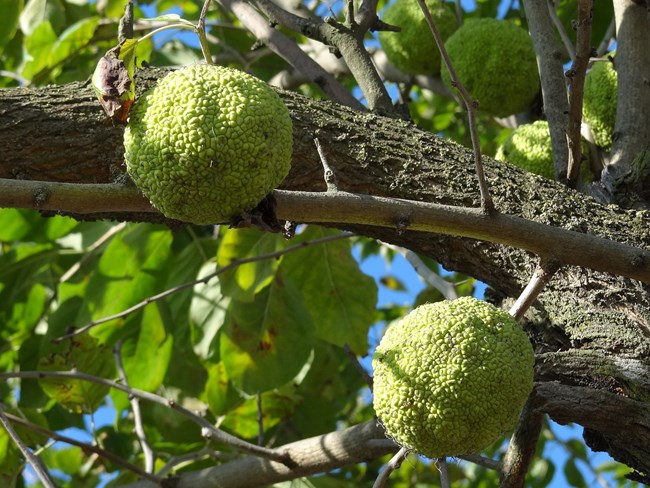Last updated: December 13, 2019
Article
Osage Apple (Orange)

Photo: Creative Commons, 2.0, Mahieddine23
Lewis sent back some slips of the trees from St. Louis with the letter, in which he wrote, “I send you herewith inclosed, some slips of the Osages Plums, and Apples…I obtained the cuttings, now sent you, from the garden of Mr. Peter Choteau, who resided the greater portion of his time for many years with the Osage nation...”
It was from the branch wood of the Osage orange that the Native peoples made their highly prized bows. Osage orange bows were prime items of barter among the tribes -- one early report said that in the early 1800s the price of a good Osage orange bow was a horse and a blanket. Tribal battles were fought for possession of lands generously supplied with Osage orange trees. So sought after was the Osage orange bow, it was used by Shawnee and Wyandotte in Ohio and by the Blackfeet in Montana. These bows must have been traded and traveled over a distance of more than 2,000 miles.
Indians had other uses for the Osage orange. The stout wood was well suited for war clubs and tomahawk handles. The ridged and scaly bark of the trunk provided both a fiber for rope and tannin for making leather. Root tea was used to wash sore eyes and the roots and inner bark were used to make a light orange dye.
As settlers began migrating west during the 19th century, they quickly found that Osage orange trees were ideal for hedges to control livestock, long before barbed wire was invented. The wood is the strongest of any tree grown in North America, and its thick, sharp spikes are a serious deterrent. In other words, Osage orange trees make a great fence.
It was quickly learned that a single row of hedge trees planted a foot apart would yield a fence that was "horse high, bull-strong, and hog-tight" in four years. Some farmers would weave the already twisted and intertwined limbs of the young trees tightly together, a technique known as "plashing," for a more impenetrable barrier.
Osage orange rows have been rapidly disappearing from the Midwest. No longer needed as fence or other uses, the once extensive patchwork of hedge rows is now marked only by scattered remnants. But, recently, chemists have begun looking inside Osage oranges and have found a number of compounds that may be of use for food processing, pesticides, antibiotics, and other medical products.
